Last week we discussed 3 measures to use with color Doppler for evaluating the presence of mitral regurgitation (MR). If you missed last week’s blog, or would like to refresh, you can find them here:
This week, we are going to cover 3 qualitative techniques with the presence of MR using pulsed-waved (PW) Doppler and continuous-waved (CW) Doppler! By the end of this blog, we hope to have a better understanding of how these qualitative methods help us in determining the severity of MR:
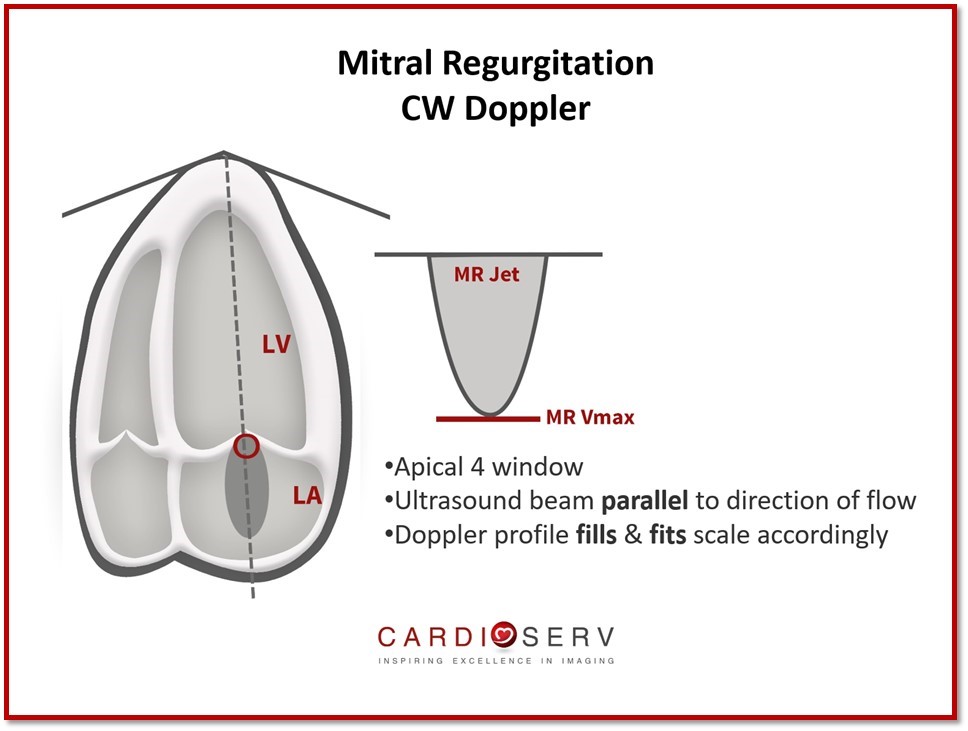
The profile of the Doppler jet can tell us a lot of information regarding hemodynamics and transvalvular flow rates. Even if MR is not detected with color Doppler, it is still essential to prove this with placing a CW Doppler through the mitral valve (MV) to demonstrate absence of flow below the baseline (TTE).
The max velocity of the MR jet does not provide us information on the severity of the MR. It does provide us with information regarding the hemodynamics of the LV & LA in regards to the MR. The max velocity of the jet represents the instantaneous systolic pressure gradient between the LV and LA.
It is common for the MR jet velocity to range between 4-6 m/s. This can allow us to easily analyze different scenarios:
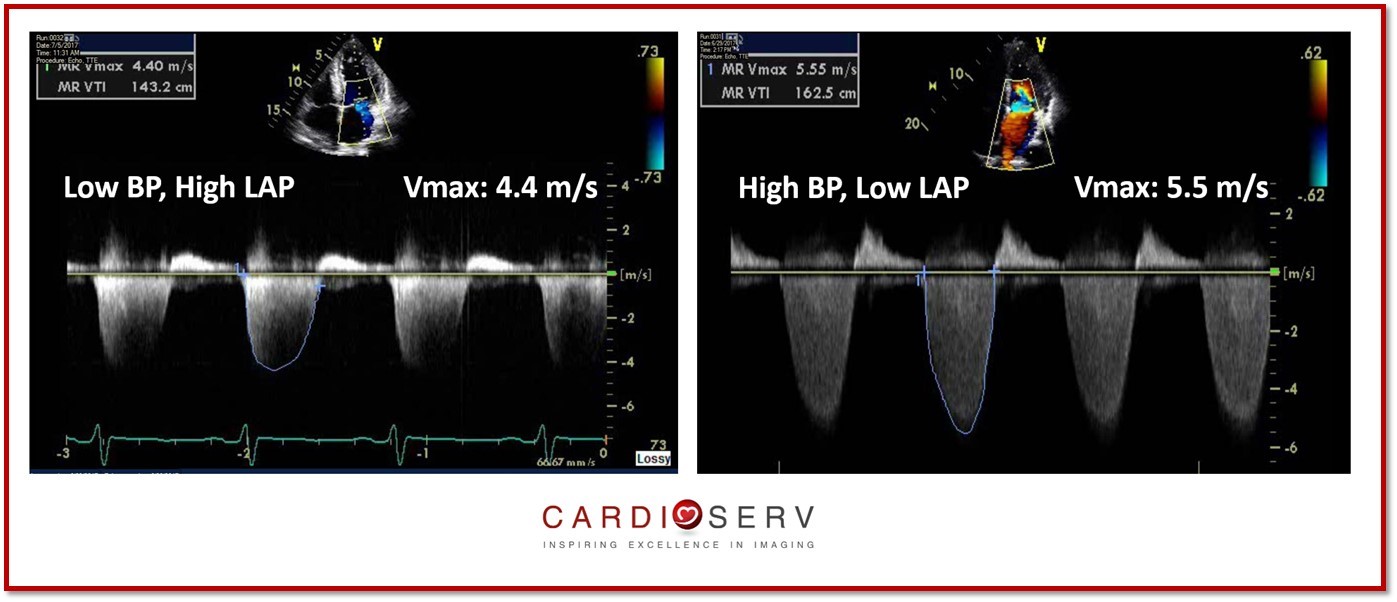
The contour and density of the jet can also provide qualitative information.
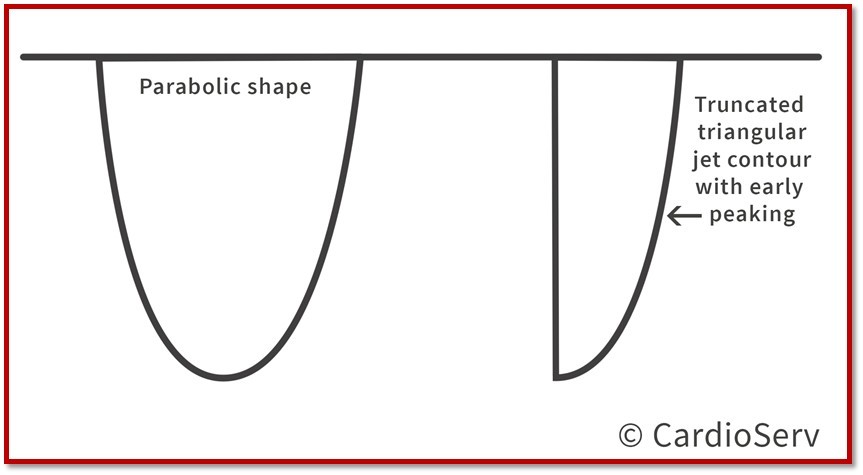
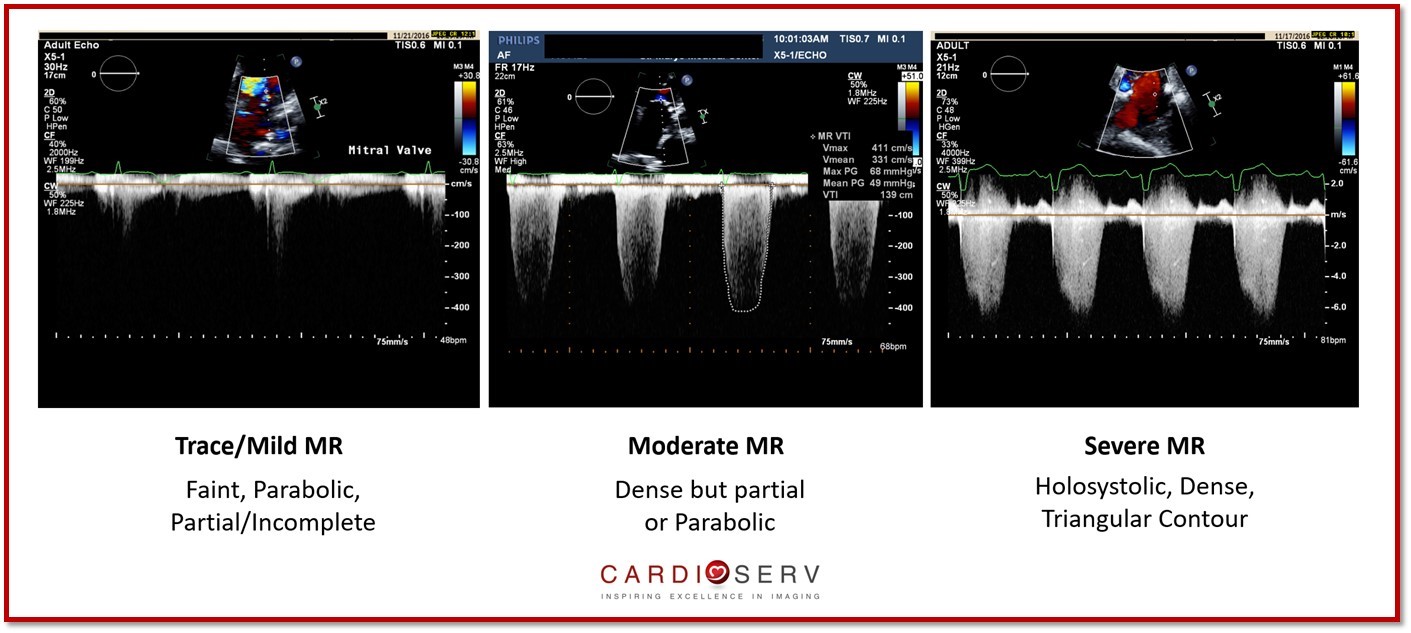
The inflow pattern and velocity can help us identify supportive signs of severe MR!
This velocity informs us of the forward stroke volume (SV) across the mitral valve. It can be increased if regurgitation is present.
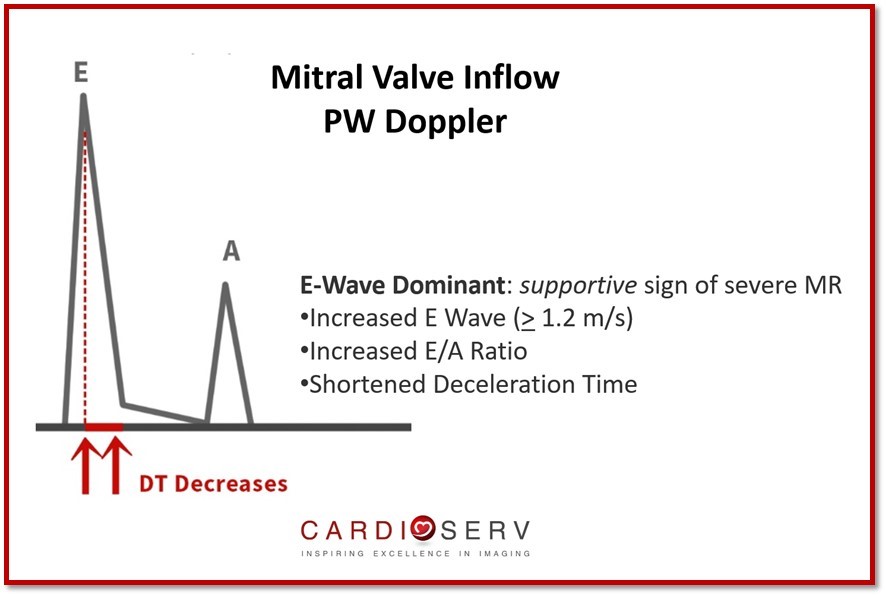
We can Doppler the pulmonary veins to evaluate for flow reversal and the hemodynamics due to MR.
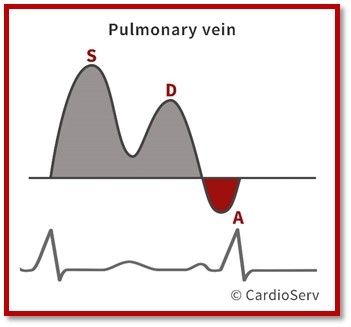
Components of pulmonary vein waveform:
Flow reversal pattern is present, there is > 85% probability of severe MR.
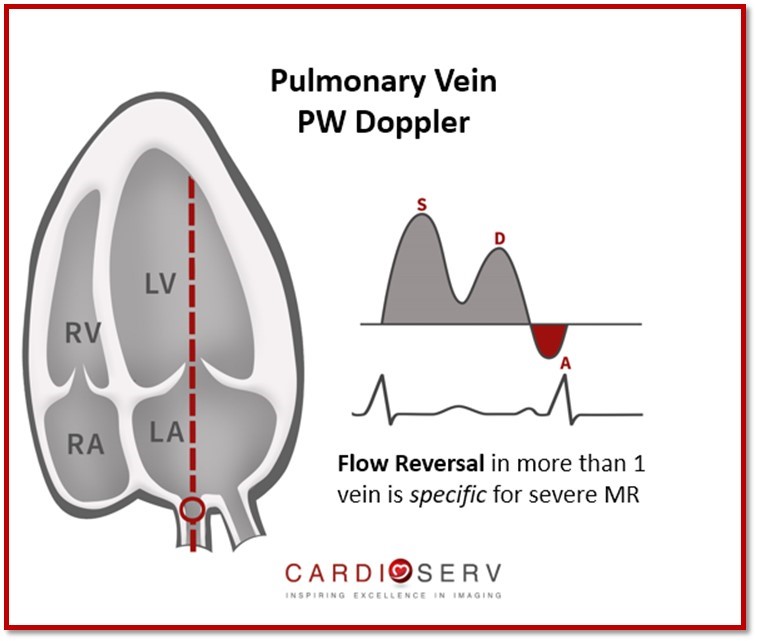
Items to note:
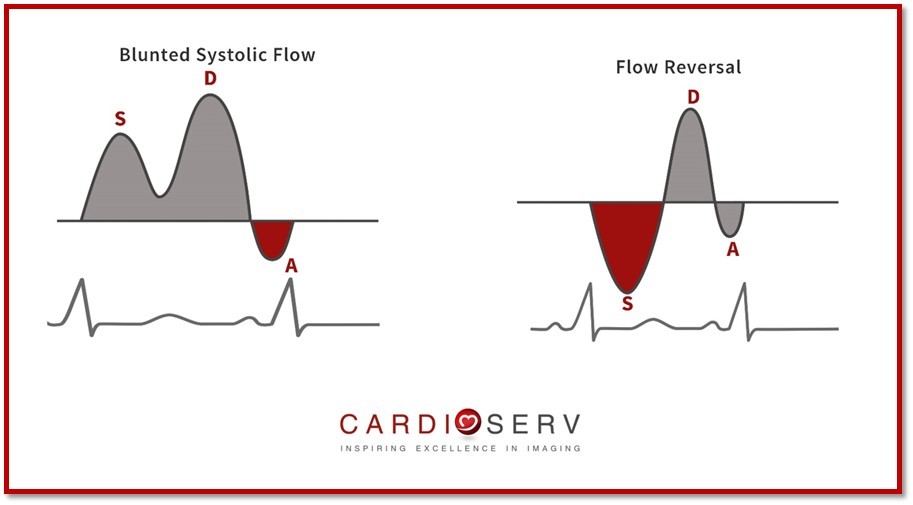

We hope that you can utilize these qualitative and semi-quantitative measures within your evaluation of severity of MR! In this blog, we covered information in regards to MR about:
Next week, we will start discussing quantitative methods to determining the severity of mitral regurgitation! We love to hear feedback and comments from our readers!
 Andrea Fields MHA, RDCS
Andrea Fields MHA, RDCS
Stay Connected: LinkedIn, Facebook, Twitter, Instagram
References:
Zoghbi, W. A., MD, FASE, & Adams, D., RCS, RDCS, FASE. (2017). Recommendations for Noninvasive Evaluation of Native Valvular Regurgitation. JASE, 30, 4th ser., 1-69. Retrieved June 12, 2017.




Aug
2017
Feb
2020
Aug
2017
Aug
2017
Aug
2017
Aug
2017
Aug
2017
Aug
2017
Oct
2017
Nov
2017
Jun
2018
Jul
2018
Oct
2018
May
2019
May
2019